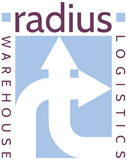The last several years have brought multiple disruptions to supply chains across the globe, and market conditions continue to change.
With discussions shifting this year from high transportation costs and shortages to inventory reductions caused by slowing consumer demand, many are left wondering what the coming year might look like for their supply chains.
Here are the 10 logistics trends shippers should keep an eye on in the coming year.
- Increased use of data analytics: Data analytics is becoming an increasingly important tool in logistics as companies look to make sense of the vast amounts of data they Collect. By using data analytics, companies can identify patterns and trends that can help them improve operations and decision-making.
- Widespread use of autonomous vehicles: Autonomous vehicles are beginning to be widely used in logistics, and this trend will likely continue in the coming years. Autonomous vehicles can help improve efficiency and safety and can also help reduce costs.
- Proliferation of 3D printing technology: 3D printing is becoming increasingly popular and will likely play a more significant role in logistics in the coming years. 3D printing can help companies reduce waste and save money on manufacturing costs.
- Continued growth of e-commerce: E-commerce is continuing to grow rapidly, and this trend will likely continue in the years ahead. This growth is significantly impacting the logistics industry, as companies need to find ways to quickly and efficiently deliver products to consumers.
- Focus on sustainability and “green” initiatives: Sustainability is becoming an increasingly important focus for companies in the logistics industry. “Green” initiatives can help companies save money while also helping the environment.
- Emergence of blockchain technology in supply chain management: Blockchain technology is starting to be used more frequently in supply chain management. This trend will likely continue in the coming years. Blockchain can help companies improve transparency and trust between different parties involved in the supply chain process.
- Increasing use of artificial intelligence (AI) and machine learning (ML) will significantly impact the logistics industry in 2023: These technologies have already started to disrupt the industry, and their use will only continue to grow in the coming years. AI and ML can help companies make better decisions about where to allocate resources, optimise operations, and improve customer service.
- More widespread adoption of Robots as a Service (RaaS) models will also significantly impact the logistics industry: RaaS allows businesses to rent robots rather than buy them, which makes them more affordable and accessible. This trend is already happening in the industry and will likely continue growing in 2023. Robots can help companies speed up processes, reduce costs, and improve efficiency.
- Continued growth of collaborative robots (cobots) will also be a significant trend in 2023: Cobots are robots that work with humans to complete tasks. They are becoming increasingly popular because they are safe and easy to use. Cobots can help companies automate tasks, improve quality control, and reduce costs.
- Increased use of digital transformation initiatives will also be a key trend in 2023: Digital transformation is using technology to improve business performance. It can include using cloud-based solutions, automating processes, and data analytics. Digital transformation can help companies become more efficient, agile, and innovative.
Conclusion
As 2023 approaches, supply chain directors and other business leaders need to be aware of these potential trends so they can plan accordingly.
By staying ahead of the curve, companies will be better positioned to compete in the ever-changing logistics and transportation landscape.



